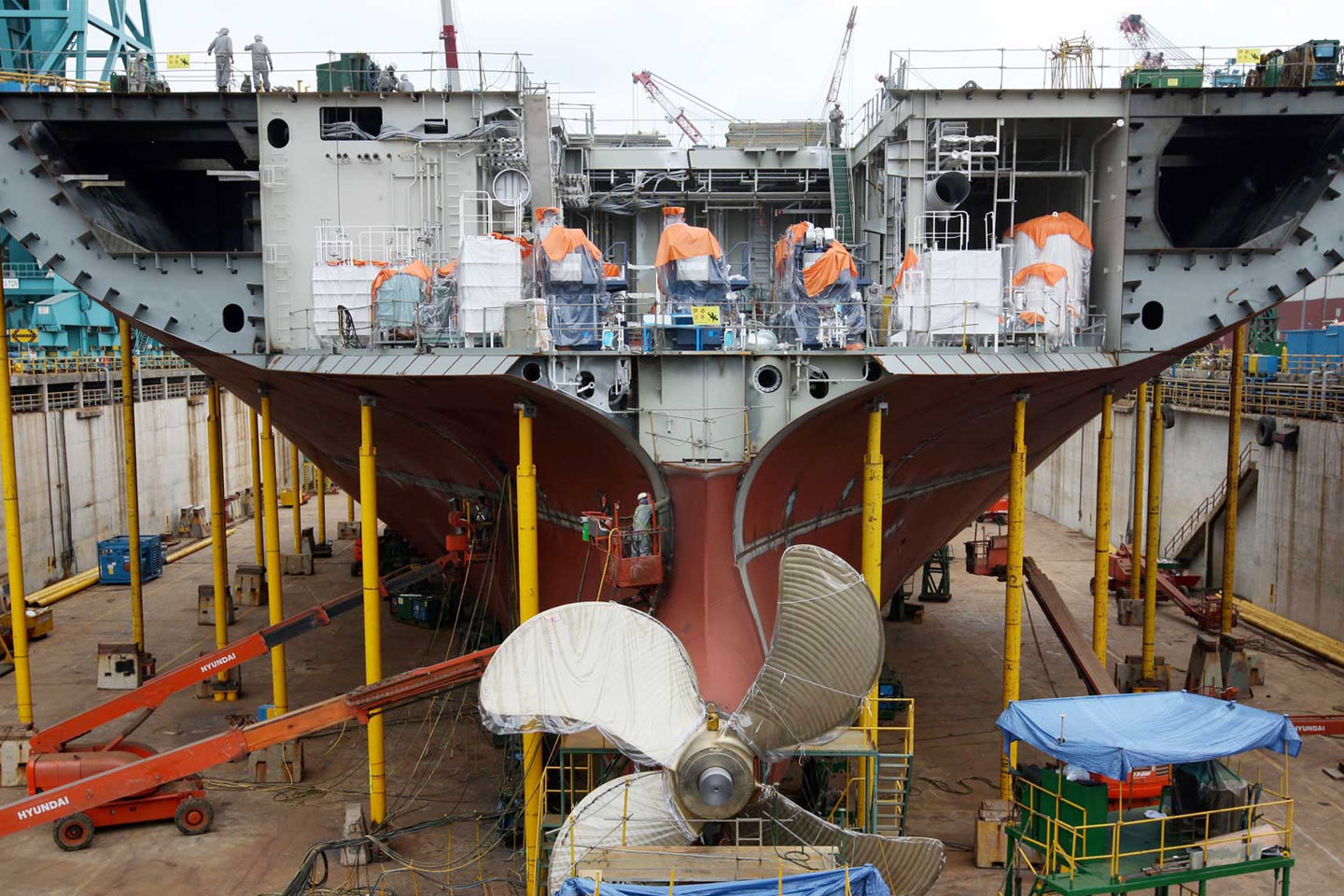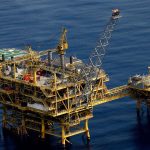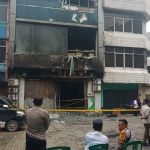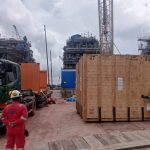Liga Asuransi – Great readership, how are you? This time we continue our discussion about marine risks or rather ship building risks.
As we already know, one of the Indonesian government’s programs is to develop sea transportation to reduce logistics costs, which are currently too high compared to other countries.
One of the reasons is that the infrastructure, systems and quality of ships are still below standard and must be improved.
This time we want to discuss specifically about the risks of shipbuilding, especially the construction of new ships. However, because usually new ships are built in shipyards that also carry out repairs and maintenance of old ships.
If you are interested in this article, please share it with your friends so that they also understand as you do.
Accidents in shipyards are very common. One of the accidents that is still fresh in our memories is the burning of the tanker MT Jag Leela when it was docked at the shipyard owned by PT Waruna Nusa Sentana Shipyard, Belawan Harbor, Medan Belawan, Medan City in 2000. Which causes the entire ship to burn and cause a total loss.
In line with the increasing demand for the marine transportation industry over the past few years, the shipbuilding industry has also experienced an increase in demand.
The number of ships produced in various shipyards has been increasing year by year and the shipowners’ demand for new ships seems to be endless. This is true for almost all types of ships, from traditional bulkers and tankers to private mega-yachts.
Several new shipyards are under construction and the old shipyards have significantly increased their capacity. Prices continue to rise, and the cost of building a new ship has doubled for certain types of ships in recent years.
As a result of the increase in shipbuilding activities, it has caused casualties to insurance companies as a result of the occurrence of many accidents in shipyards that caused large losses.
During the early 2000s a number of claims, totaling approximately USD 740 million, hit the insurance market, while the total worldwide premiums for all builders risk insurance policies hovered around USD 125 million.
Here are some of the shipbuilding accidents in the world:
|
No. |
Project Name | Type of Ship | Cause of Accident |
Amount of Loss |
| 1 | DIAMOND PRINCESS |
Cruise |
Fire |
USD 310 million |
| 2 | ULYSSES |
Yacht |
Fire |
USD 25 million |
| 3 | COSTA FORTUNA |
Cruise |
Fire |
USD 20 million |
| 4 | WESTERDAM |
Cruise |
Fire |
USD 75 million |
| 5 | AL RIYADH |
Yacht |
Fire |
USD 30 million |
| 6 | PRIDE OF AMERICA |
Cruise |
Sinking |
USD 228 million |
There seems to be something wrong in the shipbuilding industry that needs to be fixed. The claims have prompted insurers to take corrective steps, as losses of such magnitude cannot be covered by the relatively small shipbuilder risk insurance market.
From the results of discussions with insurance experts who finally agreed that certain standards must be met by shipyards and must include review and testing of safety management, quality assurance and quality control systems and shipyard procedures. This will include, but will not be limited to:
- Geographical and environmental risks.
- General site conditions.
- Processes and procedures.
- Quality assurance/quality control of the production process.
- General housekeeping.
- Management of subcontractors.
- Permit to work systems; – Emergency response plans.
- Fire fighting capability.
- Shipyard equipment.
- Atmospheric monitoring and control of industrial gases.
- Launching and sea trials.
- Site safety.
- Casualty history.
In many cases, insurance companies have demanded that a survey be conducted before providing any form of coverage. The survey may be carried out prior to providing an indication of prices and terms, or as a guarantee to the insurer, on the condition that any findings by the surveyor must be corrected within a limited period of time.
As the years have passed, surveys have become more and more common and have finally become a positive element in the process of entering into an insurance agreement.
Survey findings
Now that surveys have become standard, a lot of data are available on years of operation. So are there any issues that cause concern? Analysis of the collected information has been carried out. In essence, these findings can be divided into six distinct groups:
- Management of subcontractors
In modern shipbuilding much of the work on board ships is performed by subcontractors. The number of sub-contractors varies, but is currently around 50 to 70 percent of the workforce.
Many worked for a short time of the total construction time. Therefore, they will never be part of the history, culture and pride of the shipyard. This of course can affect attitudes towards the work done.
Surveys have revealed that on many occasions the treatment of subcontractors at shipyards differs from that of shipyard employees themselves. Findings vary, but sub-contractors often appear to be left to themselves, shipyard managers not particularly interested in their existence. In many cases sub-contractors are stationed at specific locations in the shipyard and perform their specialist work on the spot.
With regard to safety education, surveys have revealed that procedures for sub-contractors are less stringent than for permanent workers, resulting in non-compliance with the shipyard’s own procedures and safety regulations.
Subcontractors often receive inadequate emergency and safety training, which is a big concern, as they can account for most of the workforce. This is perhaps one of the most significant findings, as it actually jeopardizes safety at the shipyard and increases the chances of something going horribly wrong.
Subcontractors often use their own safety equipment and tools. These are often found to be not in the best condition and not to the standards required by shipyard safety standards themselves.
- No smoking regulations
At least one of the fires mentioned above is believed to have been started due to smoking on board. Smoking is a problem and the shipbuilding industry is often associated with smoking.
Many shipyards have succeeded in curbing smoking, but this is a culture that is slow to change. Basically, there are three types of problems associated with smoking: smoking in general, controlling smoking and prohibiting smoking.
Often there are rules and regulations in place, but these are not always enforced by shipyard management, allowing workers to act as they please. Rules are usually strict, but without penalties for disobedience.
Smoking in designated areas is a way to overcome the smoking challenge – still such places should not be on ships, but rather in safe areas of the dock. Building a smoking area is a good solution.
From the insurance company’s point of view, a total smoking ban is the preferred measure to eliminate exposure to harm. For high-end and high-value ships, such as cruise ships, passenger ships, cruise ships, etc., a total ban is required. Many shipyards have now introduced total smoking bans and strictly enforce the policy. This is also in line with stricter smoking laws in many countries, especially in Europe.
- Poor housekeeping and hygiene
Many surveys include reports of poor housekeeping and hygiene. This includes the frequency of waste disposal, especially waste containing hazardous waste. Much of the waste generated by shipyards contains combustible materials and it is important to remove all such waste periodically. Many shipyards seem to have a weak attitude towards waste disposal and their procedures do not properly address this issue.
Of course it is important to clean up the mess in the workplace and keep the area tidy. This includes the arrangement of all types of cables, welding hoses and the like, setting of lights and keeping emergency exits/escape routes free of debris, tools and equipment. Shortcomings have also been noted in the management of technical gas hoses. It should be an integral part of safety and good housekeeping regulations.
- Hot Work
For all types of hot work performed, an appropriate hot work permit must be in place. Surveys reveal that this is not always the case and some yards are found to lack a system for proper handling of hot work. Permits for work systems often appear to be less stringent on sub-contractors, reflecting the observations made above.
Fire extinguishers should always be close to the job. This seems to be a simple and easy security measure, but it is not always observed. During and after completion of work, it is important to carry out the necessary controls in the workplace and then control/patrol the finished work to ensure that no fire can occur. Hot work areas should be marked to pay particular attention to the risks involved.
Liberating insufficient gas is a problem that has tragic side effects. Over the past few years there have been accidents where shipyard workers have suffocated in confined spaces. It is not only the increased danger of flash fire but also the fatal outcome for workers operating in such areas which makes this a critical problem.
The survey also shows that, in order to facilitate their own work, workers damage their equipment/equipment, such as power lines, welding and gas hoses. This has the effect that the safety of the equipment is jeopardized, making the equipment dangerous to operate. In many cases it is found that the welding equipment is in poor condition and the technical gas hoses are old and/or have no flashback resistance.
- Fire prevention and control
Most of the claims are due to fire. This has become a major concern for the underwriting community and one of the main reasons for introducing the JH 143 form to the shipbuilding market. The steps that most shipyards take to minimize the risk of fire don’t seem to work very well and often look better on paper than they actually are.
Surveys reveal that in a booming market there is less time for shipyards to keep up to date with safety training and fire drills. Yard should not only conduct internal fire drills, but also joint fire drills with local fire brigades. It’s important that local firefighters are familiar with their shipyard facilities and firefighting organization.
At several meters it was found that the hydrants on top of the new building were not pressurized or that the water pressure was not sufficient to cover the entire new building. Another safety inconsistency found was the lack of sufficient fire fighting equipment on board and systems to locate them. Hot work should always be accompanied by a portable fire extinguisher.
It is a good practice to incorporate a new building sprinkler system as and when it operates in various sections. The same applies to fire doors to limit the spread of fire during the outfitting phase.
Surveys also reveal that often resources set aside for fire safety are minimal, with equipment found to be insufficient and poorly maintained, water pressure too low and stockpiles of supplies insufficient, such as portable fire extinguishers and detectors.
- Top management involvement
Most reports indicate the role of shipyard management in safety organizations and their level of involvement. In most cases their involvement is absent or peripheral. There is no direct involvement in shipyard security and such things are not high on their list of priorities. Emergency Response Plans (ERPs) are often created to minimum legal requirements, not reflecting the shipyard’s actual requirements to protect personnel and production.
It is the responsibility of top management to ensure that all safety procedures in place are enforced. It is often found that paperwork has been done, rules and regulations are enforced, but when surveying actual workplaces or new buildings these rules and regulations are either unknown or not put into practice.
Top management should be involved in shipyard safety and preventing safety and poor work practices. It is their job to create a good environment at the shipyard and adopt a mentality in the workforce that promotes safety and pride in the work being done – this should apply to subcontractors as well.
Safety and work culture starts at the top, but if top management does not have the will or interest to create such an environment, it will be reflected in the general attitude towards safety and good work practices.
How do I get Builders Risk insurance?
From the explanation above, it can be seen that the risk of shipbuilding is high so that not many insurance companies are interested.
The best way is to use the services of an insurance brokerage company. Insurance brokers are insurance experts who are on your side. The broker’s job is to design an insurance program that fits your needs.
Furthermore, insurance brokers negotiate with several insurance companies including international insurance companies if they cannot be accepted by domestic insurance companies.
The most important job of an insurance broker is to help you take care of an insurance claim if it occurs. Insurance brokers who will deal with insurance companies, loss adjusters and marine surveyors appointed by the insurance company.
With their expertise and ability, they represent and at the same time act as your advocate to manage insurance claims.
One of the insurance broker companies with experience in marine insurance is L&G Insurance Broker.
For all your insurance needs, contact L&G now!
Source:
https://www.gard.no/web/updates/content/52008/builders-risks-shipyard-risk-assessment
—
Looking for Insurance Products? Don’t Waste Your Time and Contact Us Right Now
L&G HOTLINE 24 HOURS: 0811-8507-773 (Call – Whatsapp – SMS)
website: lngrisk.co.id
E-mail: customer.support@lngrisk.co.id
—















